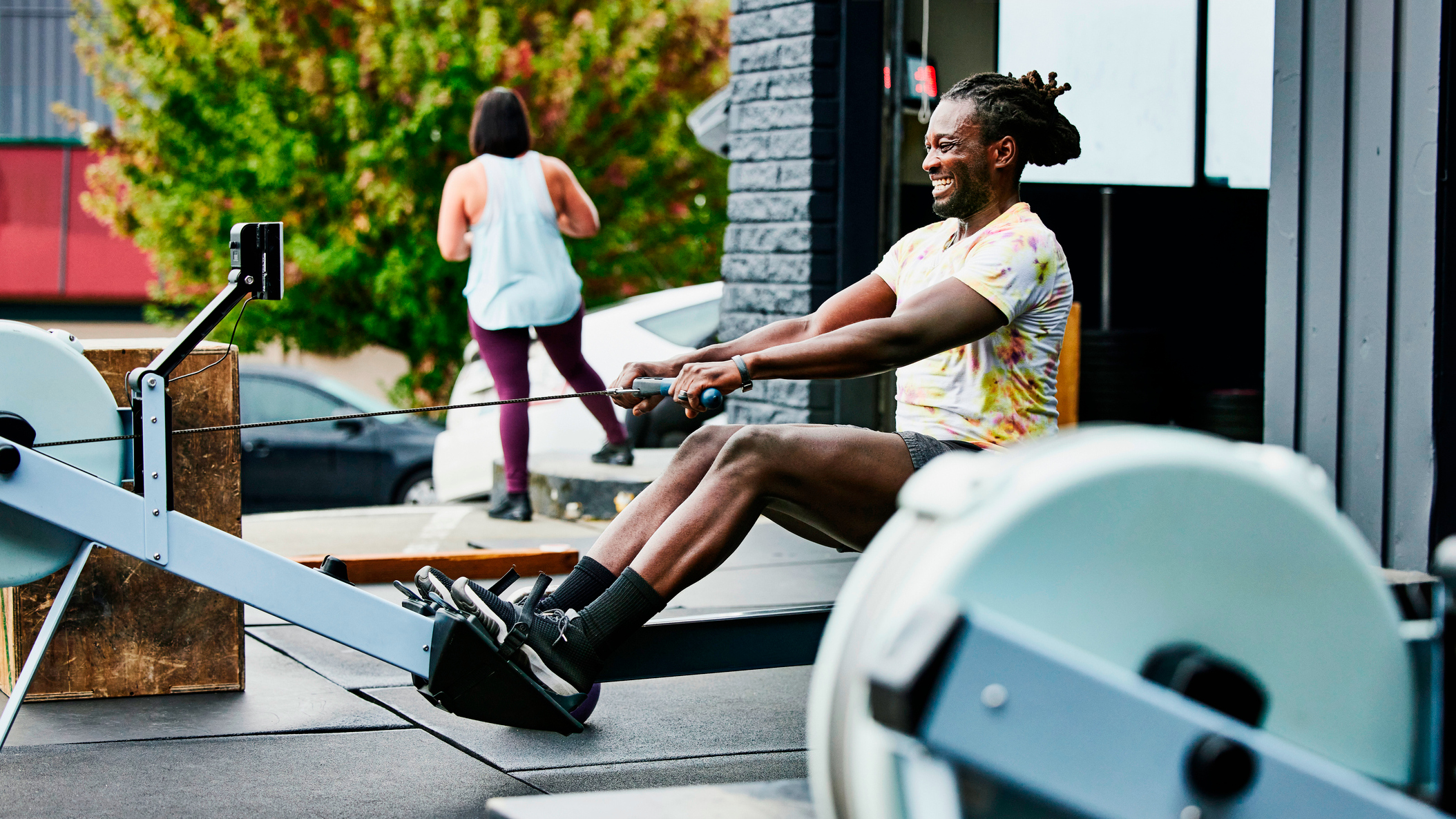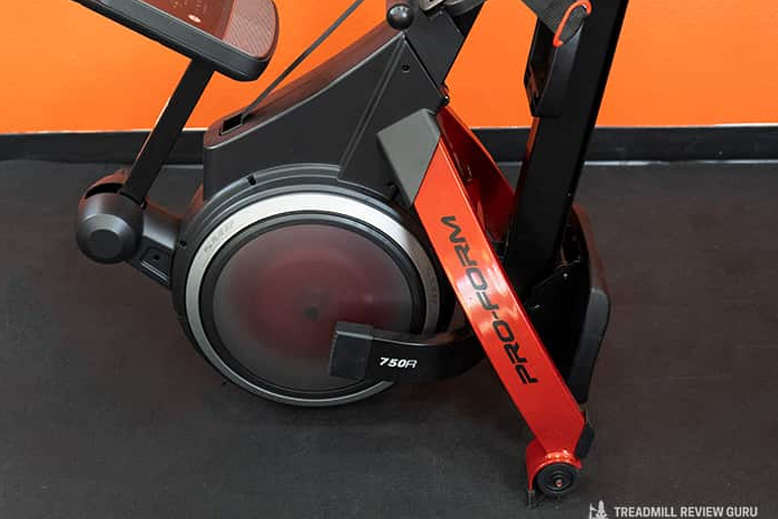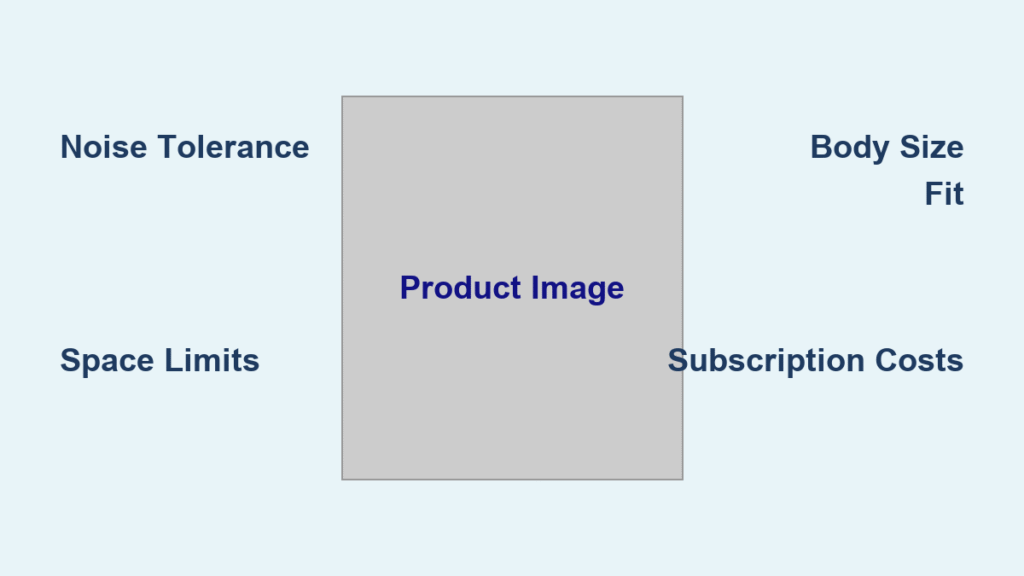You’ve decided to bring gym-quality fitness home but face an overwhelming sea of rowing machine options. Air, water, magnetic, hydraulic – each promises a “perfect” workout yet feels completely different. Without knowing which resistance type actually matches your lifestyle, you could waste hundreds on a machine that sits unused. This guide cuts through the marketing noise with actionable criteria used by rowing coaches and thousands of home users. You’ll discover exactly how to match resistance mechanisms to your noise tolerance, decode which monitor metrics drive real progress, and avoid hidden subscription traps. Most importantly, you’ll learn how to select a rower that fits your body, space, and budget – guaranteeing it becomes your go-to workout tool instead of expensive clutter.
The right choice hinges on understanding how four core resistance systems impact your daily experience. Forget generic “best rower” lists; your ideal machine depends entirely on whether you prioritize apartment-friendly silence, immersive water sounds, or competitive training metrics. By the end of this guide, you’ll have a personalized shortlist based on your non-negotiables – no guesswork required.
Air Rowers: The Competitive Training Powerhouse

Air resistance rowers deliver the authentic “on-water” feel used in Olympic training and CrossFit competitions. As you pull harder, the fan flywheel creates exponentially increasing resistance – mimicking how water pushes back against oars. This dynamic response makes them unbeatable for high-intensity interval training (HIIT) and race simulation.
What to actually look for: The Concept2 RowErg ($990) dominates this category for good reason. Its 96-inch rail accommodates users up to 6’6″, handles 500 lbs, and maintains near-perfect accuracy over years of use. Weekly maintenance takes just 5 minutes: wipe the monorail and apply chain lube. Crucially, its PM5 monitor displays the non-negotiable 500m split time – the universal metric for tracking rowing progress.
Pro Tip: Skip any air rower under $800. Cheap models like Stamina’s Hydraulic Rower ($299) use flimsy monorails that warp, causing inconsistent resistance. The Concept2’s stainless steel rail ensures smooth gliding even after 10,000+ meters.
Water Rowers: Immersive Zen-Like Cardio
Water resistance creates a rhythmic “swoosh” as paddles churn fluid in a sealed tank. Like air rowers, resistance scales with your effort – but the sound is significantly quieter and more meditative. This makes water rowers ideal for steady-state cardio sessions where you want to lose yourself in the motion.
Critical buying insight: Models like the Ergatta Rower ($2,499) and WaterRower Natural ($895) offer wooden aesthetics that blend with home decor. However, their low seat height (14-16 inches) can strain knees during mounting – a dealbreaker if you have mobility issues. WaterRower’s seat height jumps to 20 inches with their tall-leg kit ($129), making it accessible for most users.
Maintenance reality: Every 6 months, add purification tablets to prevent algae growth. Annually, drain and flush the tank – a 30-minute process requiring two people to tip the unit. Skip this, and murky water will ruin the immersive experience within a year.
Magnetic Rowers: Apartment-Safe Silence

Magnetic resistance uses adjustable magnets against a flywheel, delivering near-silent operation perfect for shared living spaces. Unlike air or water systems, resistance levels stay fixed per setting – ideal for controlled rehab workouts or consistent heart-rate zones.
Space-saving solution: The ProForm 750R ($799) folds vertically to just 46″ x 22″, fitting in closets or behind doors. Its magnetic drag system requires zero lubrication – just occasional dusting of the flywheel vents. For heavy users, note its 250 lb weight limit; exceeding this strains the hydraulic folding mechanism.
Warning: Avoid “magnetic-hybrid” claims like Hydrow Wave ($1,695). Its water tank is purely aesthetic – resistance comes entirely from magnets. You pay $800 more than a basic magnetic rower for a decorative tank.
Hydraulic & Hybrid Systems: Budget Traps to Avoid
Hydraulic rowers (like Sunny SF-RW5801 at $349) use piston arms for resistance. They’re the cheapest entry point but suffer critical flaws: resistance feels jerky, seals leak oil after 6 months, and they lack accurate performance metrics. Coaches universally recommend avoiding them for serious training.
Smart hybrid exception: The Aviron Strong Series ($2,549) combines air resistance with magnetic backup. During gamified classes, it auto-adjusts resistance – a unique feature worth considering if you need motivation. Its 20-year frame warranty dwarfs competitors (Peloton offers just 1 year). For $950 less, the Strong Go model uses your tablet instead of a built-in screen – identical performance without the markup.
Monitor Metrics That Actually Drive Progress
Your rower’s monitor is useless if it doesn’t display four critical metrics:
– 500m split time (e.g., “2:05/500m” = your pace)
– Strokes per minute (SPM)
– Total distance
– Elapsed time
Cheap rowers under $500 often replace split time with “stroke count” – meaningless for tracking improvement. Always test the monitor before buying: pull hard for 30 seconds and verify the split time drops as you increase effort. Without this, you’re flying blind.
Budget Breakdown: Where to Splurge vs. Save

$500 is the reliability floor. Below this, frames wobble, monitors drift, and warranties expire before your first oil leak. The sweet spot is $800-$1,200 where you get:
– Concept2 RowErg ($990) – the gold standard
– Rogue Echo Rower ($925) – commercial-grade durability
– Echelon Row ($1,000) – foldable with live classes
Luxury tax alert: Peloton Row ($3,295) costs 3.3x more than Concept2 but adds only a swivel screen and $44/month Form Assist coaching. For context, 5 years of Peloton + subscriptions ($5,475) could buy 5 Concept2 machines.
Used market hack: Concept2 units sell within hours at 90% of retail value. Inspect three things: monorail smoothness (run seat empty), chain tension (shouldn’t sag), and PM5 screen clarity.
Size & Ergonomics: Avoid Painful Mistakes

Tall users (over 6’2″): You need 38+ inches of rail length. The Concept2’s 96″ frame accommodates inseams up to 36″, while compact models like Ergatta Lite (82″ long) force cramped strokes. Measure your inseam before buying – your knee should never fully lock during the drive phase.
Heavy users (over 250 lbs): Verify weight capacity and frame material. Hydraulic rowers like ProForm 750R max out at 250 lbs. For 300+ lbs, choose Aviron Strong (507 lb capacity) or Concept2 (500 lb) with steel frames.
Storage reality check: Foldable models like ProForm 750R require 24″ of ceiling height to store vertically. Water rowers (Ergatta, WaterRower) need 48″ of clearance due to tank height – measure your space before ordering.
Subscription Costs: The $500 Hidden Trap
Interactive rowers often lock core features behind subscriptions:
– $12-$34/month: Aviron, Ergatta (gamified classes)
– $39-$44/month: iFIT, Peloton, Hydrow (live coaching)
Critical tip: Aviron Strong Go ($1,599) uses your tablet – same classes as the $2,549 Strong Series but $950 cheaper. Never pay for built-in screens; your iPad works better.
If you prefer no subscriptions, choose Concept2 RowErg or Yosuda Dragonfly ($399). Their basic monitors display all essential metrics without locking features behind paywalls.
Maintenance: What No Salesperson Tells You
- Air rowers: Wipe monorail weekly; oil chain monthly. Takes 5 minutes.
- Water rowers: Add purification tablets twice yearly; flush tank annually.
- Magnetic rowers: Dust vents monthly – zero lubrication needed.
- Hydraulic rowers: Expect piston seal replacement every 3 years ($75 part).
Warranty truth: Frame coverage ranges from 1 year (Peloton) to 20 years (Aviron). Electronics are universally covered for just 1 year – a key reason to avoid complex “smart” rowers.
Your Rowing Machine Decision Cheat Sheet
| If you need… | Best choice | Why it wins |
|---|---|---|
| Apartment-friendly silence | ProForm 750R | Folds to 46″, near-silent, $799 |
| Real rowing feel under $1,000 | Concept2 RowErg | Unbeatable resale, 500m split tracking |
| Over 300 lb capacity | Aviron Strong Series | 507 lb limit, 20-year frame warranty |
| Zero monthly fees | Yosuda Dragonfly | Magnetic, $399, full metrics |
| Gamified motivation | Aviron Strong Go | Uses your tablet, $1,599 |
Final Buying Checklist
Start with your non-negotiable constraint:
1. Noise tolerance? → Choose magnetic for apartments, water for moderate noise, air for garages.
2. Space limits? → Verify folded dimensions and storage height.
3. Body size? → Prioritize rail length >38″ for tall users, capacity >250 lbs for heavier users.
Test rowers at gyms if possible – the difference between magnetic “artificial” resistance and water’s organic feel is impossible to describe. Finally, check return policies: Peloton charges $250 restocking fees, while Concept2 dealers often offer 30-day trials.
Your perfect rower isn’t the most expensive or feature-packed – it’s the one that fits seamlessly into your life. With this guide, you’ve eliminated guesswork. Now choose confidently, row consistently, and watch your fitness transform. The water’s waiting.




